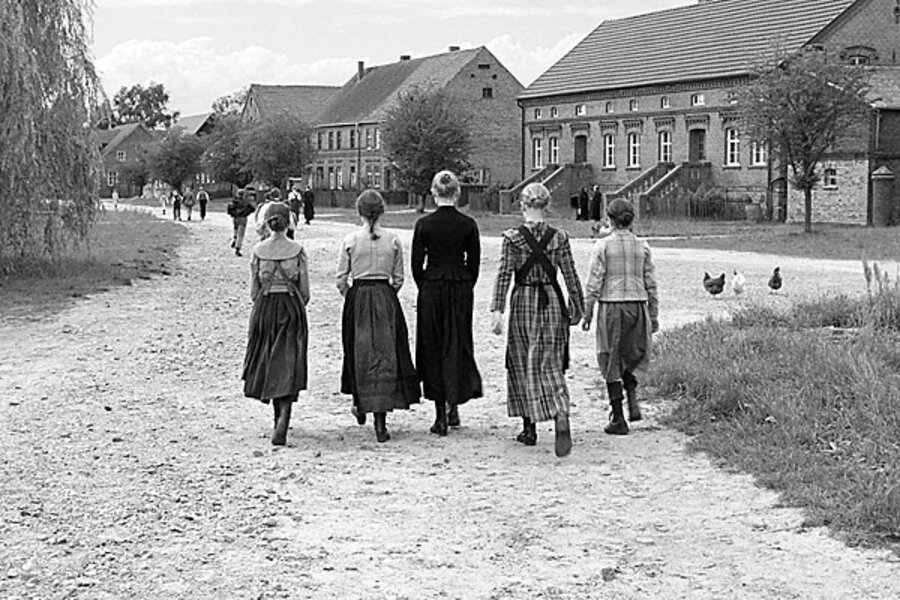The White Ribbon: movie review
Loading...
Michael Haneke is a director who makes movies about things that go from bad to worse. Very worse. In “The White Ribbon,” his latest exercise in picking the wings off flies, the time is pre-World War I Germany and the place is a small agricultural community where strange things are happening. Very strange.
In the opening scene, the local doctor (Rainer Bock) is thrown by his horse because some unknown sadist strung a tripwire between two trees. I didn’t stick around long enough during the end credits to discover if “no animals were harmed during the making of this movie,” but, knowing Haneke, I’d be concerned.
Perhaps I am being unfair. It is not four-legged creatures that Haneke has it in for. His specialty is the two-legged variety – us. “The White Ribbon” presents us with a village as harrowing and hermetically sealed as the Salem of “The Crucible.” Just about everybody in it is damned or damnable. Heading the list are the sleazy Baron (Ulrich Tukur), who employs many of the village’s inhabitants, and the Protestant pastor (Burghart Klaussner), who regards little children as curs who must be mastered. (Given the beady-eyed kids in this movie, you might be inclined to agree.) When a farmworker’s wife dies from a fall through the Baron’s rickety barn loft, her son does what any sane person would do under the circumstances: He mangles the Baron’s cabbage crop. Then, mysteriously, the Baron’s son is brutalized and hung upside down in the barn. Whodunit?
Haneke is not a big one for answers. As in “Caché,” his most celebrated and probably best film, no solution to the depravity is provided. As the village becomes more and more ingrown in its hatreds and disgusts, the only vaguely normal people to emerge are the young schoolteacher (Christian Friedel) and the teenage nanny (Leonie Benesch) who works at the Baron’s estate. You hate to see them get amorous because only bad things can come of it, although, by the end, I was so repelled by everybody that I couldn’t wait for World War I to kick in and thin the ranks.
Haneke may be trying to make a “statement” about the psychoses that led Germany into two world wars. By leaving his tripwires exposed, with no culprit to blame, he may also be making the existential point that depravity has no author. It just is.
Or, as I prefer to think, he’s simply stroking all those cinéaste masochists who slobber at sadism just so long as it’s artfully composed. (The black-and-white cinematography by Christian Berger is very fine.) His movies are disturbing in a way that the Hollywood horror cheapies aren’t – they portend a lot more than they expend – but they share the same manipulative mind-set. Haneke is such an expert puppeteer that it’s easy for the gullible to mistake that manipulation for art. I feel the same way about “The White Ribbon” now as I did when I saw it last fall at the Toronto film festival. It’s an M. Night Shyamalan movie with a PhD. Or maybe an MA. Grade: C+ (Rated R for some disturbing content involving violence and sexuality.)





